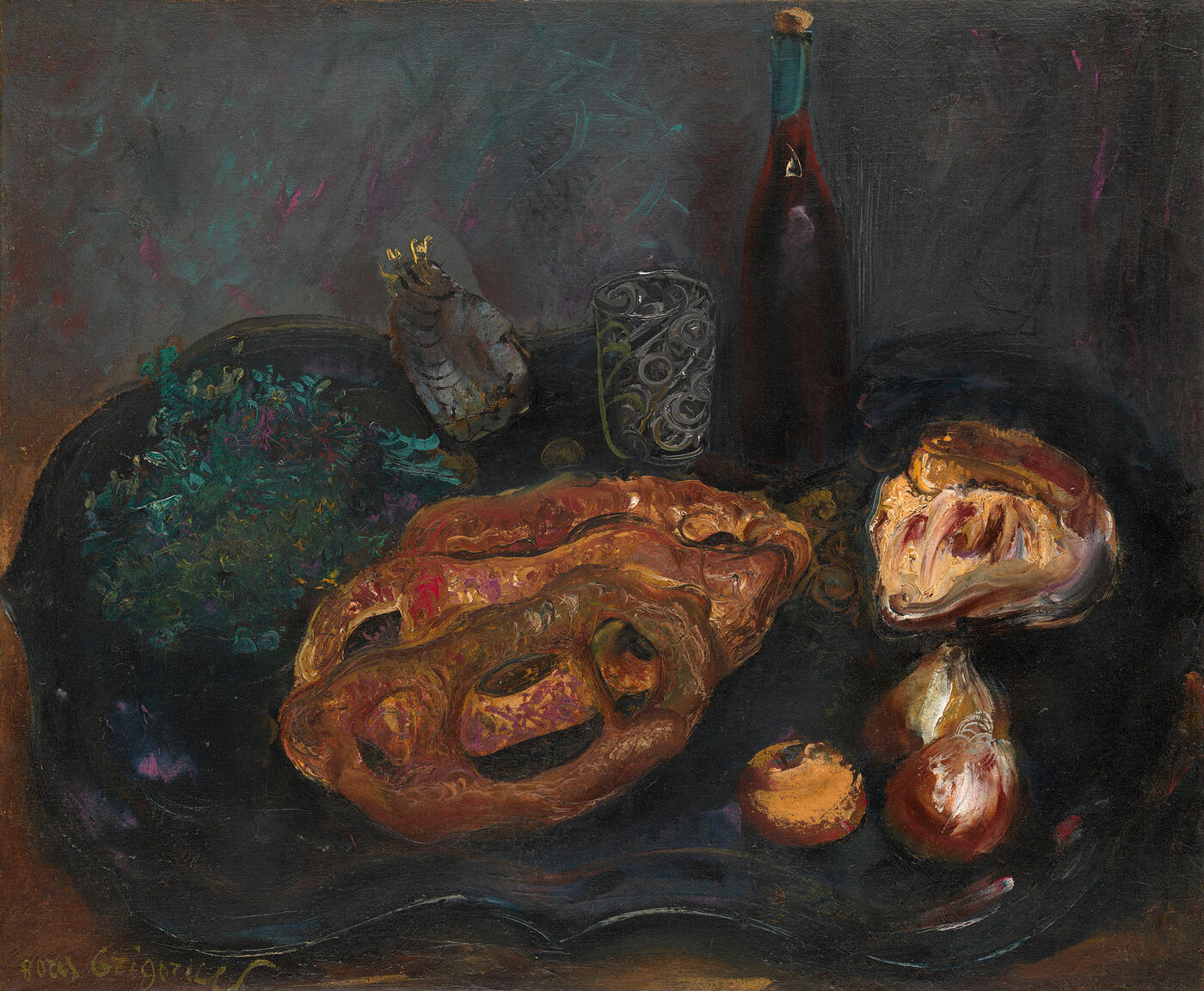MacDougall's Russian Art Auctions 27-30 May 2012
27 May 2012

* 22. GRIGORIEV, BORIS (1886-1939)
Still Life with Bread and Onions, signed.
Oil on canvas, 60 by 72 cm.
200,000–300,000 GBP
Painted in the 1930s.
Provenance: Private collection, Europe.
Authenticity certificate from the experts N. Aleksandrova and T. Zelyukina.
Exhibited: Boris Grigoriev, The State Russian Museum, St Petersburg, 21 April–29 August 2011.
Literature: T. Galeeva, Boris Dmitrievich Grigoriev, St Petersburg, Zolotoi vek, 2007, No. 211, illustrated.
Exhibition catalogue, Boris Grigoriev, St Petersburg, Palace Editions, 2011, p. 172, No. 162, illustrated.
In characteristically paradoxical fashion, Still Life with Bread and Onions is both unmistakeably French and unmistakeably Grigoriev. No other Russian émigré artist assimilated the artistic trends and traditions of his adopted homeland quite so successfully into his own particularly Russian view of the world. It is this, coupled with his distinctive use of line which is so instantly recognisable as Grigoriev.
In the wake of the Visages du monde series, still lifes began to take centre stage in his oeuvre in the mid to late 1920s, which also coincided with his move towards a more “pure” form of painting. “Pure painting” had emerged from the new sense of individuality and creative freedom common to many of the artistic movements at the turn of the 19th century and hinged on the communication through art of pure emotion,
of an idea, free from the limitations of figurative representation.
In Still Life with Bread and Onions the distinctive curved black tray and the simple wooden table from his sparsely furnished studio at Cagnes-sur-Mer are recognisable from other still lifes of this period, such as Still Life with Berries and Apples. Although the setting of these works often remains the same, the components change, for what is important here is not what is being depicted, but how. The most prosaic, every-day objects serve as vehicles through which the artist can explore sophisticated nuances of colour
and form and the expressivity of tone and line because they have been reduced to their qualities of colour and shape.
Grigoriev’s work of this period is characterised by its wealth of contrasts. In contradiction to the Northern European tradition of the still life genre, these objects are not endowed with a particular significance, either on their own or in combination, allegorical or otherwise, but the artist is using recent trends and innovations to reinterpret this most traditional of genres.
In 1928 during his brief teaching post at the Academy of Arts in Santiago, before revolution broke out and he was forced to return to France, he taught that in order to paint a still life, “you need to show the
relationship between the bottle and the background”. This relationship between the component parts is part of the play with space and volume: here in Still Life with Bread and Onions we are presented with an elevated perspective yet simultaneously flattened sense of space, which comes from Cézanne via Cubism, but the peculiar flatness and the very fact that the relationship between objects is not merely spatial shows compositional similarities with the ancient tradition of icon painting. Grigoriev, ever the master of the balancing act, brings together the ancient and the modern, the sacred and profane, the Russian and
the Western.
Notes on symbols:
* Indicates 5% Import Duty Charge applies.
Ω Indicates 20% Import Duty Charge applies.
§ Indicates Artist's Resale Right applies.
† Indicates Standard VAT scheme applies, and the rate of 20% VAT will be charged on both hammer price and premium.